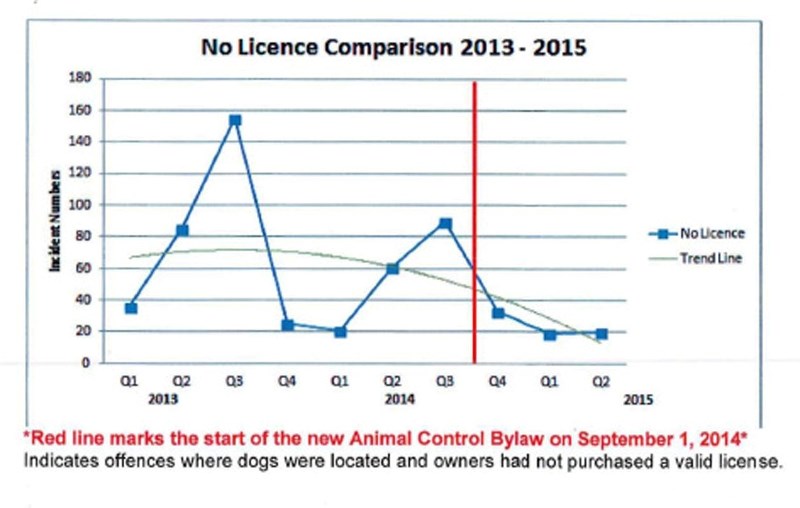The number of animal bylaw incidents in St. Albert is decreasing, but whether this is a result of obedient pet owners or a shift towards public education won’t be known for another few years, says a city official.
In a July 13 memorandum to council, community and protective services tallied the number of complaints and offences over the past nine months to help measure the impact of the new animal bylaw.
The stats show that the number of unlicensed and loose dogs and reported dog bites is down from previous years.
Compared to the same period in 2014 there were approximately half the number of cases of animals without proper documentation (95) or on the loose (62), and one fifth the number of animals biting humans (three), between January and June 2015.
But Stu Fraser, peace office program supervisor with the City of St. Albert, says the city is going to need more than a year’s worth of data to see if the new animal bylaw is effective.
“Numbers have to be judged over a period of time to make sure that trends are consistent and that we’ve affected a long-term change,” he said.
That may be especially true when a shift in focus may have skewed the numbers during the one-year trial period of the new bylaw.
Since the new bylaw came into effect on Sept. 1, 2014, municipal enforcement officers were asked to educate rather than ticket.
Warnings were not recorded on a consistent basis, meaning the city could see a drastic change in the number of incidents when and if bylaw officers are told to start ticketing more heavily.
Officers were also asked to visit the city’s 18 off-leash areas on a regular but random basis in an effort to be less complaint-driven. The focus on these green spaces could have diverted the officers’ attention from other parts of the city, said Fraser.
But Fraser said numbers are only part of puzzle when it comes to determining changes in pet owner and non-pet owner behaviours.
“What we’re hoping to see at the end of a one-year trial period, as well as the community survey that’s going through the recreation (department) is whether or not there’s a change in usage in that area or if there’s a concentration of usage of pet owners who use it as an off-leash area,” he said.
Mayor Nolan Crouse said that council will not base its decision on numbers alone when the bylaw comes up for review in the fall, but did indicate that he will be keeping a close eye on the number of dog bite incidents.
“Any one of those (incidents) could be very catastrophic. You could have 1,000 tickets and they’re not catastrophic, but you could have one bite and it could be fatal. So I think it’s that statistic that’s most important,” said Crouse.
One unquestionably positive outcome of the new bylaw – or at least of its public education component – is the number of dog licence purchases and renewals.
Last summer Fraser had summer students go door to door advising residents of the animal bylaw changes. The effort drove sales up by more than 1,000 new dog licences.
“That was part and parcel of the education campaign. At the same time they made people aware that there would be a late payment fee added and I believe that a lot of those efforts resulted in a drop (of outstanding dog licence accounts) this year than what we’ve seen in the past. I hope that trend continues next year,” said Fraser.




